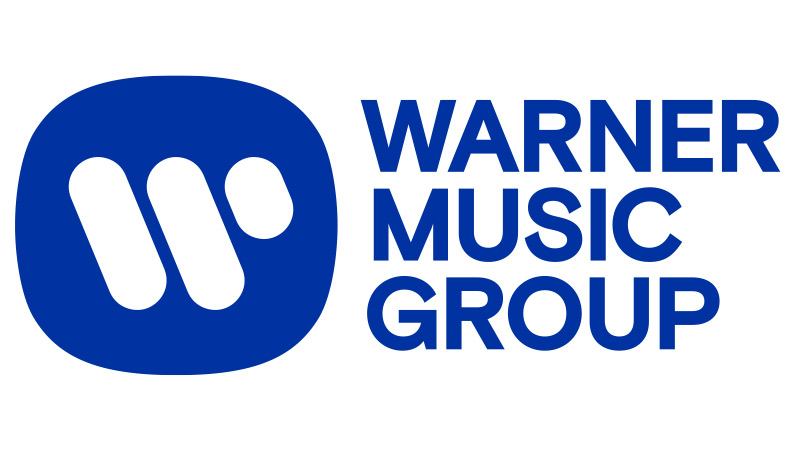
Warner Music Group Corp. today announced its first-quarter financial results for the period ended December 31, 2021.
“Hitting an all-time high in our 18 years as a standalone company is proof that we’ve never been stronger. At the same time, we’ve never had so much opportunity ahead of us,” said Steve Cooper, CEO, Warner Music Group. “Our creative expertise, global agility, and willingness to experiment set us apart from the competition and solidify our important role across the entire music ecosystem. In the coming year, we look forward to welcoming back huge superstars, breaking new artists and songwriters, and seeking out more innovative ways to bring more music to more people in more places.”
Lou Dickler, Acting CFO, Warner Music Group said “The strength and diversity of our revenue streams coupled with our operational efficiency drove margin growth, even as lower-margin revenue lines recovered. We’re committed to making sustained investments in our core business, and to taking pioneering steps that position WMG for the next wave of growth, all with a financially disciplined, ROI-focused perspective.”
Revenue was up 20.9% (or 22.4% in constant currency) driven by strong digital revenue growth of 21.5% (or 22.2% in constant currency) across Recorded Music and Music Publishing. The quarter included an additional week, primarily reflected in Recorded Music streaming revenue. Additionally, the quarter included the impact of a new deal with one of our digital partners impacting Recorded Music streaming revenue. These items were partially offsetting and, adjusting for these items, total revenue was up 17.9% (or 19.4% in constant currency). Total streaming revenue increased 22.8% (or 23.6% in constant currency) driven by growth across Recorded Music and Music Publishing, including revenue from emerging streaming platforms. Digital revenue represented 62.1% of total revenue in the quarter, compared to 61.8% in the prior-year quarter. Recorded Music physical, licensing and artist services and expanded-rights revenue and Music Publishing performance, mechanical and synchronization revenue all had double-digit growth.
Operating income was $239 million compared to $196 million in the prior-year quarter. Net income was $188 million compared to $99 million in the prior-year quarter. OIBDA was $320 million, an increase from $267 million in the prior-year quarter, and OIBDA margin decreased 0.2 percentage points to 19.8% from 20.0% in the prior-year quarter. The increases in operating income, net income and OIBDA were primarily due to increased revenue. The decrease in OIBDA margin was primarily due to an increase in non-cash stock-based compensation and other related expenses from a one-time equity grant and the timing of expense recognition for new annual equity grants in the quarter.
Adjusted operating income, Adjusted OIBDA and Adjusted net income exclude non-cash stock-based compensation and other related expenses and expenses related to restructuring and other transformation initiatives in both the quarter and the prior-year quarter. In the prior-year quarter, COVID-related expenses are also excluded. Adjusted EBITDA excludes these items and includes expected savings resulting from transformation initiatives and the pro forma impact of certain specified transactions. See below for calculations and reconciliations of Adjusted operating income, Adjusted OIBDA, Adjusted net income and Adjusted EBITDA.
Adjusted OIBDA increased 25.9% from $282 million to $355 million and Adjusted OIBDA margin increased 0.9 percentage points to 22.0% from 21.1% in the prior-year quarter due to strong operating performance, which was partially offset by growth of lower-margin COVID-impacted revenue streams in the quarter. Adjusted operating income increased 29.9% from $211 million to $274 million due to the same factors affecting Adjusted OIBDA, partially offset by higher depreciation and amortization expenses due to recent acquisitions and capital spending.
Adjusted EBITDA increased 31.0% from $297 million to $389 million with margins improving 1.9 percentage points from 22.2% to 24.1%. The increase was largely due to the same factors affecting Adjusted OIBDA in addition to higher pro forma savings expected to be realized from certain cost-savings initiatives and the impact of certain specified transactions.
Adjusted net income was $223 million compared to $114 million in the prior-year quarter. Adjusted net income grew due to an increase in Adjusted operating income and the favorable impact of exchange rates on the Company’s external euro-denominated debt, hedging activity and intercompany loans, partially offset by lower unrealized gains on the mark-to-market of certain investments and an increase in income tax expense due to higher pre-tax income.
Basic and Diluted earnings per share was $0.36 for both the Class A and Class B shareholders due to the net income attributable to the Company in the quarter of $188 million.
As of December 31, 2021, the Company reported a cash balance of $450 million, total debt of $3.846 billion and net debt (defined as total debt, net of deferred financing costs, premiums and discounts, minus cash and equivalents) of $3.396 billion.
Cash provided by operating activities decreased 24% to $129 million from $169 million in the prior-year quarter. The change was largely a result of strong operating performance, which was more than offset by continued A&R investment and timing of working capital. Capital expenditures increased to $34 million for the quarter as compared to $18 million in the prior-year quarter, mainly due to investments in facilities, including the EMP fulfillment center expansion to support continued growth in this business, and IT infrastructure. Free Cash Flow, as defined below, decreased 37% to $95 million from $151 million in the prior-year quarter.
Recorded Music revenue was up 19.4% (or 20.9% in constant currency) due to growth across all revenue lines, including increases in digital revenue which reflect the continued growth in streaming, the Company’s largest source of revenue. Adjusted for the benefit of the additional week and the impact of the new deal with one of our digital partners, as noted above, Recorded Music revenue was up 15.9% (or 17.4% in constant currency). Digital revenue grew 19.7% (or 20.5% in constant currency) due to the strong performance of new and carryover releases, as well as revenue growth from emerging streaming platforms. Streaming revenue grew 20.8% (or 21.9% in constant currency). Adjusted for the benefit of the additional week and the impact of the new deal with one of our digital partners, Recorded Music streaming revenue was up 16.9% (or 18.0% in constant currency). Digital revenue represented 62.8% of total Recorded Music revenue versus 62.6% in the prior-year quarter. Artist services and expanded-rights revenue increased 28.9% (or 33.3% in constant currency), reflecting an increase in merchandising and concert promotion revenue, both of which were disrupted by COVID in the prior-year quarter. Physical revenue grew 12.1% (or 14.0% in constant currency) primarily due to new releases, an increasing demand for vinyl products and COVID disruption in the prior-year quarter. Licensing revenue increased 11.3% (or 12.7% in constant currency), mainly due to higher synchronization and other licensing revenue, as businesses continued to recover from COVID disruption. Major sellers included Ed Sheeran, Coldplay, Dua Lipa and Silk Sonic.
Recorded Music operating income was $276 million, up from $223 million in the prior-year quarter, and operating margin was up 0.7 percentage points to 19.9% versus 19.2% in the prior-year quarter. OIBDA increased to $330 million from $269 million in the prior-year quarter and OIBDA margin increased 0.6 percentage points to 23.8%. Adjusted OIBDA was $336 million versus $275 million in the prior-year quarter with Adjusted OIBDA margin up 0.5 percentage points to 24.2%. The increases in operating income, OIBDA and Adjusted OIBDA were driven by increased revenue. The increases in operating margin, OIBDA margin and Adjusted OIBDA margin were primarily due to strong operating performance, which was partially offset by growth of lower-margin COVID-impacted revenue streams in the quarter.
Music Publishing revenue increased 30.9% (or 31.6% in constant currency). The revenue increase was driven by growth across all revenue lines. Digital revenue increased 34.3% (as reported and in constant currency) reflecting the continuing growth in streaming, including emerging streaming platforms, and timing of new digital deals. Digital revenue growth in the quarter was impacted by a shift in the collection of writer’s share of U.S. digital performance income from certain digital service providers. This change has no impact on Music Publishing OIBDA, but results in a slight improvement to OIBDA margin. Streaming revenue increased 37.2% (or 35.8% in constant currency). Digital revenue represented 58.1% of total Music Publishing revenue versus 56.6% in the prior-year quarter. Synchronization revenue increased due to higher television, motion picture and commercial income and COVID disruption in the prior-year quarter. Performance revenue increased as bars, restaurants, concerts and live events continued to recover from COVID disruption. Mechanical revenue increased as businesses continued to recover from COVID disruption and from strong physical sales.
Music Publishing operating income was $32 million compared to $18 million in the prior-year quarter, largely driven by increased revenue. Operating margin increased 3.7 percentage points to 14.0%. Music Publishing OIBDA increased 38.5% to $54 million and OIBDA margin increased 1.3 percentage points to 23.6%. Adjusted OIBDA increased 37.5% to $55 million and Adjusted OIBDA margin increased 1.1 percentage points to 24.0%. The increases in OIBDA margin and Adjusted OIBDA margin were primarily due to strong operating performance.
S: WMG



